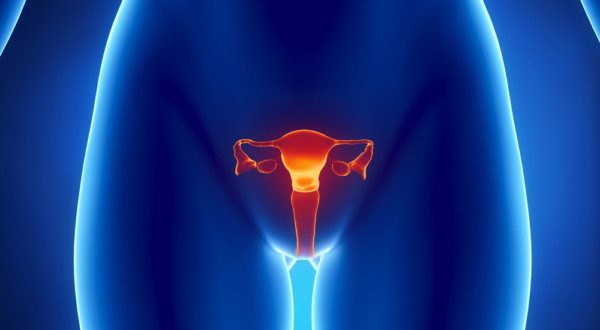Types of Hysterectomy
Many patients are often unaware that there are different ways of types of hysterectomies. There are multiple ways in which a hysterectomy is performed, and some are more invasive than others. The type of hysterectomy best suited for you will depend on many factors. Your gynecologist will recommend what is best for your health and preference.
- Total hysterectomy
- Supracervical hysterectomy
- Hysterectomy with Bilateral Salpingo-Oophorectomy
- Radical Hysterectomy

Total Hysterectomy
A total hysterectomy (also referred to as a complete hysterectomy) is when the uterus and the cervix are both removed.
Some women may require a total hysterectomy because of chronic pain or endometriosis. The total hysterectomy can help women be fully relieved of this pain. In other cases, women with gynecological cancer receive this type to prevent the cancer from coming back again.
Since the cervix is removed entirely in this type of hysterectomy, there is no need to receive a pap smear test. However, it is still advised to get regular pelvic exams.
Supracervical Hysterectomy
In a supracervical hysterectomy, also known as a partial hysterectomy, only the upper portion of the uterus is removed. Unlike the total hysterectomy, the cervix is not removed.
Women with benign gynecological diseases such as abnormal uterine bleeding, prolapse, or uterine fibroids, often get this type of surgery. They still want to keep their cervix intact but would prefer to remove any affected parts. Many women prefer to keep their cervix because they believe it will help prevent prolapse and help maintain sexual satisfaction.
A supracervical hysterectomy is considered the best option if the situation is not life-threatening.
Hysterectomy with Bilateral Salpingo-Oophorectomy
This type is similar to a total hysterectomy, but what makes this procedure different is that the fallopian tubes and ovaries are also removed. This procedure is usually performed in cases of ovarian cancer and pelvic tumors.
Radical Hysterectomy
The main difference with the radical hysterectomy is that along with the uterus, cervix, ovaries, and fallopian tubes, the upper vagina, tissue surrounding the upper vagina, and lymph nodes also are removed.
This type of hysterectomy is most commonly performed in women with endometrial cancer. A radical hysterectomy helps make sure that the cancer has no chance of coming back.
Types of Procedures
Abdominal Hysterectomy
In this procedure, the surgeon makes an incision in the abdominal wall to reach the uterus. The cut is usually above the pubic bone and can be either horizontal or vertical. This type of surgical method usually leaves little to no scarring. Your doctor may use this technique if the patient has a uterus that is larger than normal and for patients who have a narrow vagina and vaginal opening.
Vaginal Hysterectomy
With a vaginal hysterectomy, the uterus is removed through a small incision made inside the vagina. Therefore, there are no external cuts or scars. A patient may choose a vaginal hysterectomy because the procedure is shorter, has a lower cost, and the recovery time is faster. A doctor will use this strategy if pelvic support defects are present. Your doctor may also choose to use this procedure for elderly patients who may not be able to heal from external cuts or scars properly.
Laparoscopic Hysterectomy
A laparoscopic hysterectomy is done using a surgical instrument called a laparoscope, a thin tube that is attached to a light bulb and a camera.
The surgeon inserts the laparoscope into small cuts that are made in the abdomen. Usually, three or four cuts are made instead of the one large cut that is made in the total abdominal hysterectomy. Using the camera in the laparoscope to see, the surgeon will cut the uterus into small pieces and then remove it piece by piece.
The reason why a patient would choose this procedure is similar to a vaginal hysterectomy. The recovery time is short, and the surgery is also less invasive. Your doctor may choose this method for the patient if the patient has a history of normal pap smears, no heavy bleeding, and overall if the patient has a healthy cervix.
Side Effects
Hormonal
In all types of hysterectomy, you may experience side effects. Many of these changes are similar to menopausal symptoms.
- Mood swings
- Hot flashes
- Anxiety
- Depression
- Vaginal Dryness
- Decreased libido
- Irritability
These changes occur because of the loss of hormones. Women who opt to leave their ovaries intact, many times, will still experience these symptoms at a lower level.
Infertility
Infertility is another obvious effect of having the uterus removed. For women who have not yet had the children they wished too, this can be a devastating experience. Grief counseling may be needed to help overcome the loss of not experiencing pregnancy. Adoption and surrogacy are current options available to women who wish to have children. Uterine transplant research is currently in process with several successes, but it is still in its experimental stage.
No More Periods
The one after effect of a hysterectomy that most women will find enjoyable is no longer having a period. Those who had heavy periods or cramping will no longer have this discomfort. This in itself, can make having this procedure alluring to women who have finished their family planning.
A hysterectomy should not be a fear-inducing procedure. Make sure to have an open and honest conversation with you OBGYN and pick the procedure that you feel is right for you and your situation. Even after undergoing a hysterectomy procedure, aftercare and screening are still recommended. If you have a previous history of cancer, you should continue with routine exams at your gynecologist.
Ask Cool Springs Your Questions
If you have any more questions about hysterectomies or other procedures, the Cool Springs OBGYN team is happy to talk! Contact us any time!
